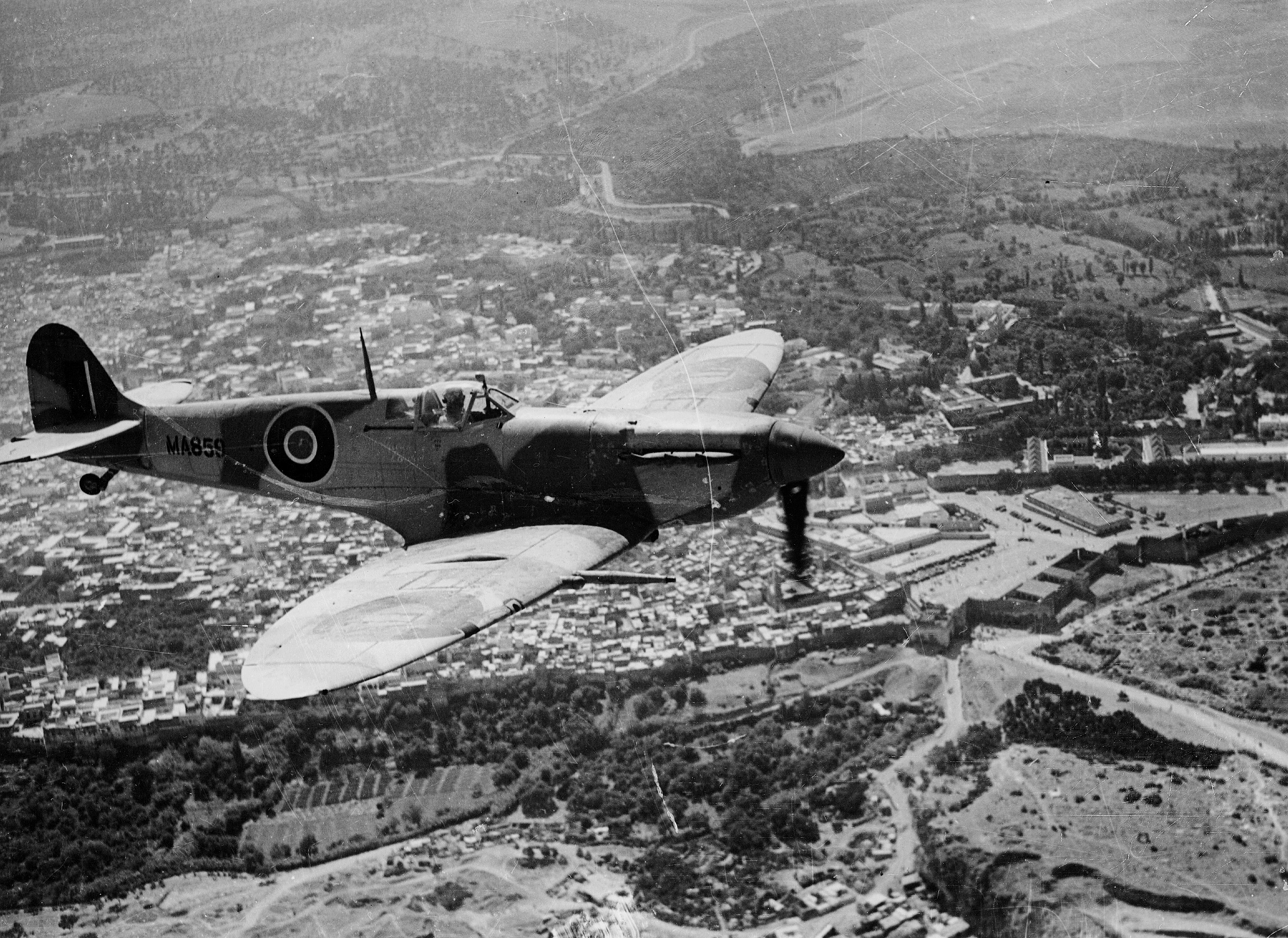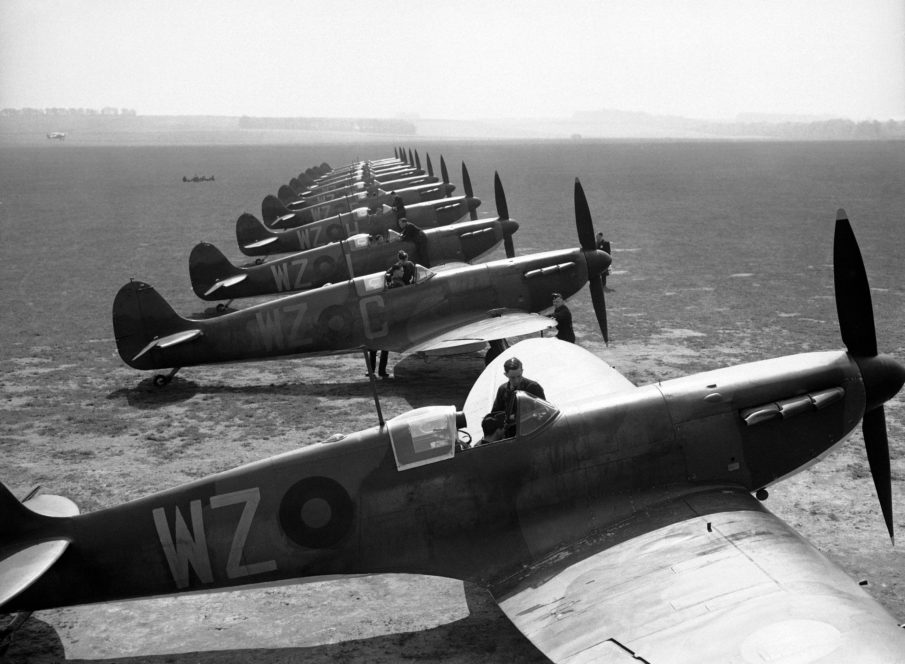May 4, 1939 — The Royal Air Force (RAF) lines up its premier fighter planes on the tarmac at the RAF Duxford airfield in England — the Supermarine Spitfires, pictured above. The plane had only been introduced into the RAF the year prior on this very airfield, piloted by men from 19 Squadron, RAF Duxford.
Spitfires saw heavy use before, during and after WWII, and many variants of the fighter would be produced during this time — this included types that were used for reconnaissance missions, anti-bomber missions, anti-fighter missions or even water-rescue operations. While they were most famously used by the RAF like in these pictures, different versions were also used by the Americans, Belgians, Polish, French and Czechs.

The Spitfires would prove themselves time and time again in the air. During the withdrawal of British troops at Dunkirk, Spitfires became instrumental in combating the bombers (and their aerial escorts) that sought to take out the retreating armies.
These scenes are depicted in Christopher Nolan’s recent film, “Dunkirk,” and you can view the first Spitfire scene here:
https://www.youtube.com/watch?v=ptJyCGNeNcE
The Battle of Britain would test the spirit of the entire country, and the RAF was the last line of defense from an all-out ground invasion that could have meant the end of England. While the Spitfires were not the only ones holding back the onslaught of Nazis (they were side-by-side with other planes, such as the formidable Hawker Hurricane), they certainly played their part. The Hurricanes were often tasked with directly targeting the bombers, while the Spitfires would engage in dogfights with the bomber escorts.
The part played by the RAF in the Battle of Britain was so crucial, Prime Minister Winston Churchill famously said that, “Never in the field of human conflict was so much owed by so many to so few.”
Read the full paragraph of his admiration toward the RAF here:
The gratitude of every home in our Island, in our Empire, and indeed throughout the world, except in the abodes of the guilty, goes out to the British airmen who, undaunted by odds, unwearied in their constant challenge and mortal danger, are turning the tide of the World War by their prowess and by their devotion. Never in the field of human conflict was so much owed by so many to so few. All hearts go out to the fighter pilots, whose brilliant actions we see with our own eyes day after day, but we must never forget that all the time, night after night, month after month, our bomber squadrons travel far into Germany, find their targets in the darkness by the highest navigational skill, aim their attacks, often under the heaviest fire, often with serious loss, with deliberate, careful discrimination, and inflict shattering blows upon the whole of the technical and war-making structure of the Nazi power. On no part of the Royal Air Force does the weight of the war fall more heavily than on the daylight bombers who will play an invaluable part in the case of invasion and whose unflinching zeal it has been necessary in the meanwhile on numerous occasions to restrain …”
Advertisement

The RAF recently celebrated their 100 year anniversary, as they were founded on April 1, 1918 as the necessity for military-oriented planes grew with the onset of WWI. They went a long way to develop the Spitfire, and have come a long way since.

Featured image courtesy of the Associated Press.










COMMENTS
You must become a subscriber or login to view or post comments on this article.